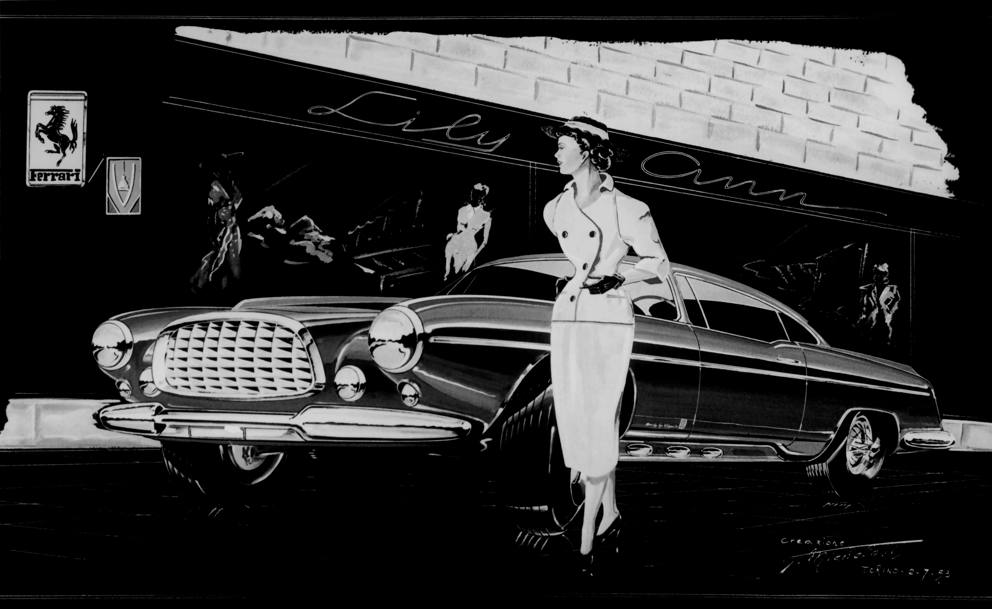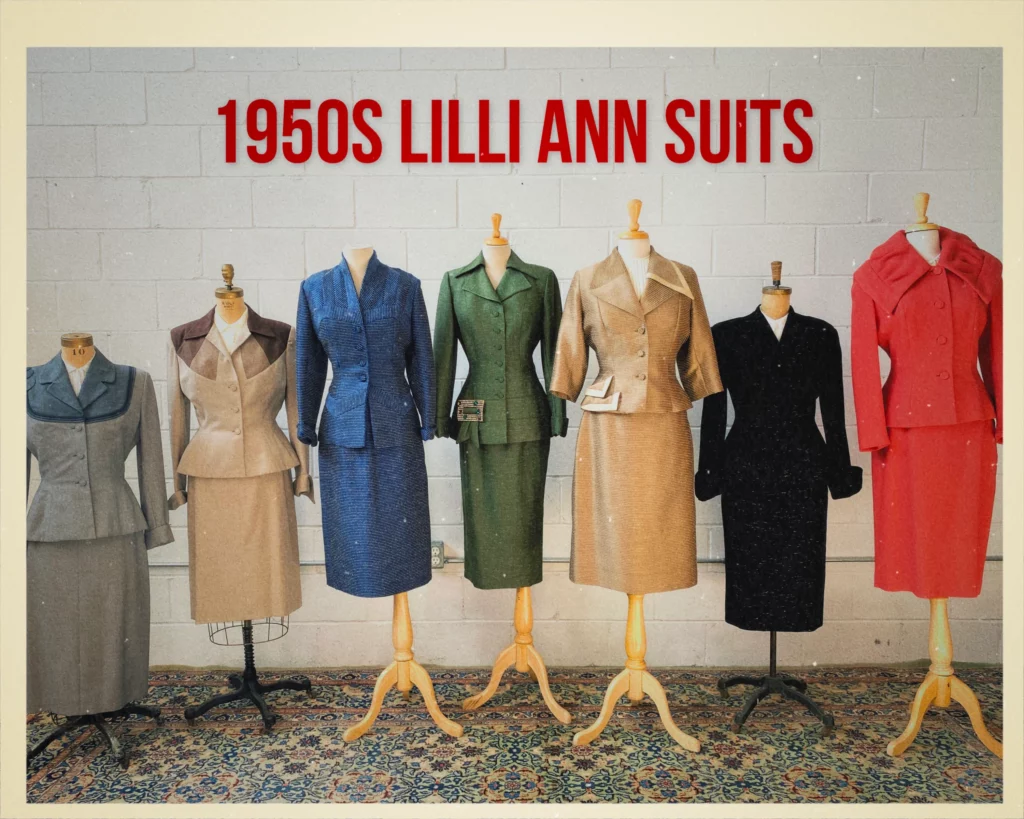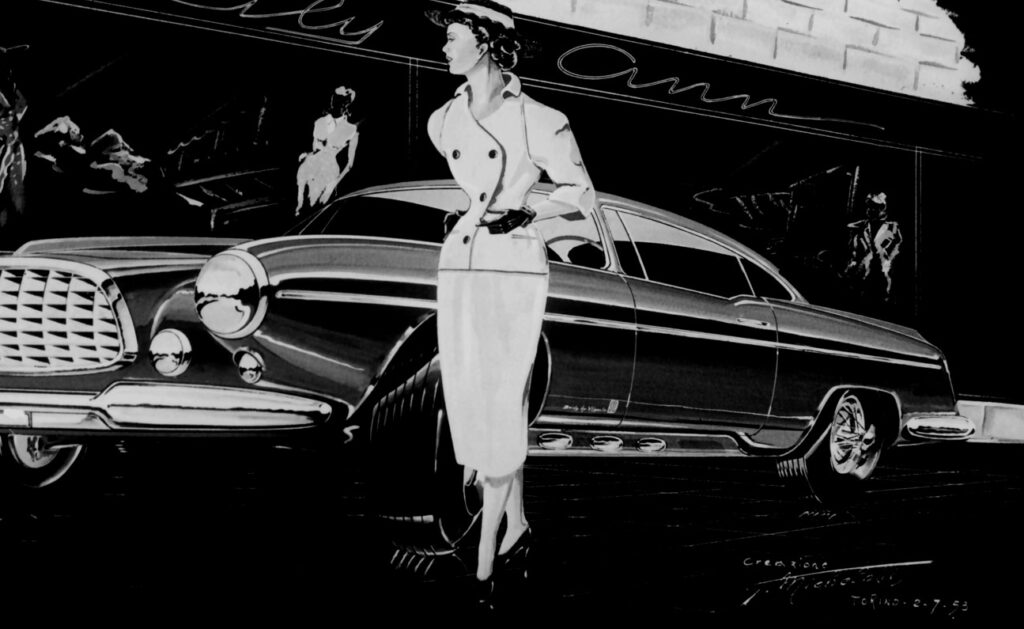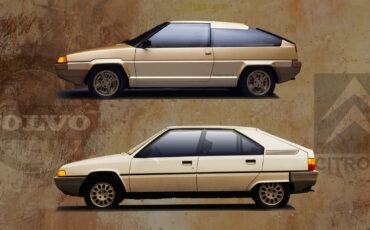
In the 1950s, Luigi Chinetti, official Ferrari importer for the United States, tasked Michelotti with designing a Ferrari 250 MM bodied by Vignale, commissioned from him by the owner of the “Lilly Ann Corporation,” a large U.S. chain of women’s fashion stores.
The primary emphasis of Lilli Ann Company revolved around the production of women’s suits and coats. Established in 1934 by Adolph Schuman in San Francisco, the company derived its name from his wife, Lillian. Following World War II, Schuman ventured to Paris and began incorporating “Paris” into the label, as reported by Vintage Fashion Guild. He played a pivotal role in rescuing numerous French companies from closure by procuring textiles from them post-war.
Lilli Ann extensively promoted its brand through various vintage fashion magazines such as Glamour, Bazaar, and Vogue from the late 1940s to the early 1950s. The pinnacle of Lilli Ann’s fashion influence was witnessed during the mid-1950s.
The Lilli Ann silhouette from the mid-50s exuded a sense of timelessness, elegance, and sophistication.
The main request of the American customer, was to have a car equipped with original bodywork and stylistically appropriate to promote the company’s business.
Luigi Chinetti some years ago recounts as follows: “I’ll always remember that one day I had him (Giovanni Michelotti) design a car that I wanted to make for a friend (Adolph Schuman) in California who was in fashion, making ladies’ clothes, and he was very successful over there: he said it had to be a Ferrari with a new custom body and that it should make an impact for his business as well.
So I asked Michelotti: “design the car but the most important thing is that you have to make it stand out in a certain way that that car will help him in his business.”
And Michelotti replied, “…but how, he already has one of the best fashion stores in San Francisco!”
I had Michelotti draw three or four Ferrari sketches with a ‘Lilly Ann Corporation’ store in the background, in which in the windows, you could see the dresses and outside, the car with a beautiful young lady about twenty-five years old, whom I saw in person one day in front of the store. So I said to Michelotti, “Make the dress for that lady there, and we’ll put her beside the car.”
A few months after the approval of the design, the Ferrari Vignale one-off was delivered by Chinetti, along with the figurines made by Michelotti which shows, as mentioned, the car in combination with that elegant woman figure, with a dress matching the colors of the bodywork.
These illustrations had the purpose of being reproduced in copy and displayed in the stores to emphasize the exclusivity of the products.
The whole operation went very well, and afterwards, when Chinetti sent the Ferrari to Schuman, he asked him if he was satisfied with the car.
“‘Very happy!” he replied, “except that when it rains it is so watertight that when the water comes in it doesn’t come out, but I love it anyway, and besides that, it’s made me earn so much money!”
Chinetti asked Schuman how he earned money since he still had the car and did not sell it. Chinetti himself didn’t earned anything on the sale since he did it as a personal favor.
The sketches were so successful that the “Lilly Ann Corporation” produced the Michelotti-designed suit model, making 5,000 units, as well as numerous series of derivative variants.
Answering Chinetti’s question: “I manufactured and sold a remarkable quantity of 5,000 suits of the dress worn by that stunning lady reproduced on the sketch, within an exceptionally short period. Subsequently, I created additional models owing to Michelotti’s innate artistic talent. Not only did he craft a stunning automobile for me, but he also left a lasting impact on the fashion trends of America during that year.” replied Schuman.
The acquisition of that Ferrari resulted in a significant profit rather than a substantial expenditure.
In addition to this, throughout his lifetime, Schuman played a pivotal role in guiding European weavers towards the path of modernization. Regrettably, he passed away in 1985, and subsequently, the company ceased its operations by 2000.
Giovanni Michelotti’s talent and brilliance are once again showcased by this anecdote, highlighting his genius not only in the automotive industry but also in various other domains. For further stories, don’t miss Giovanni Michelotti’s book “A free stylist” available here.




